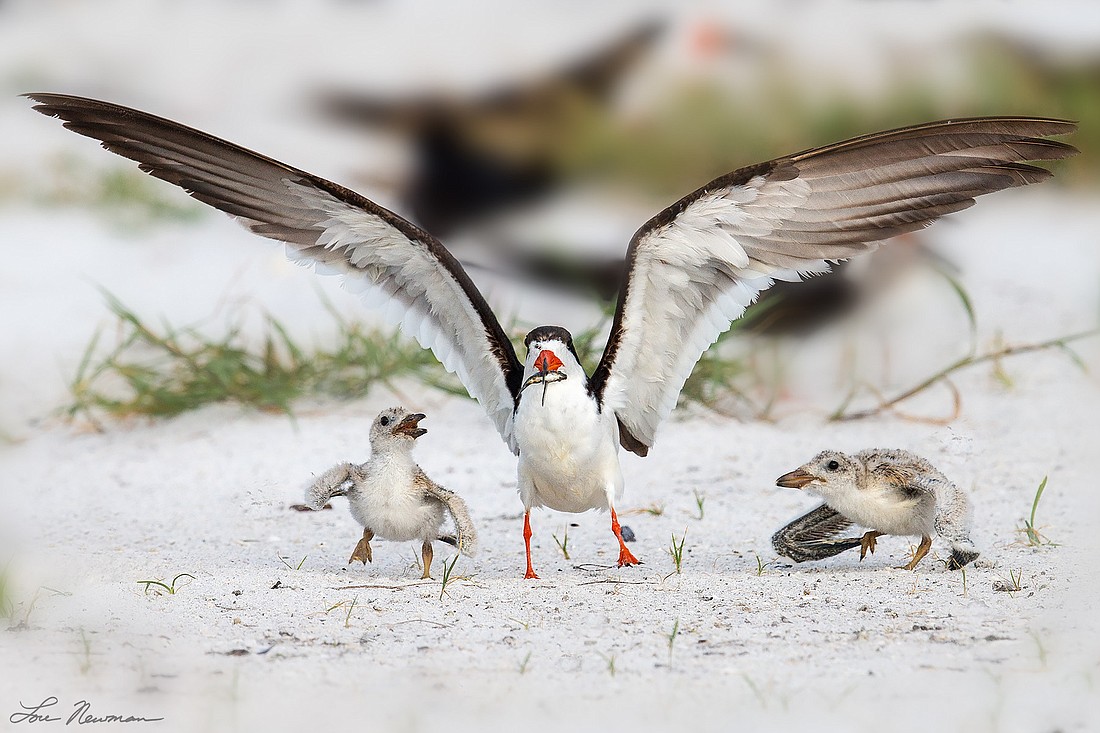- April 24, 2024
-
-
Loading

Loading

The most predictable thing about birds is that they will be unpredictable, according to retired veterinarian and wildlife photographer Dr. Lou Newman, and a colony of black skimmers on Lido Beach is no exception.
Typically, black skimmers breed in May, and chicks hatch in June. This year, however, chicks hatched into the first week of August.
Now, the colony has approximately 120 chicks ranging in age from a few days to 8 weeks old, and is off to a successful start compared to the two prior years, when tropical storms Debby and Andrea, in 2012 and 2013 respectively, wiped out the youngest local black skimmers, according to Newman, a Plymouth Harbor resident.
The late start to hatching season could mean the birds tried unsuccessfully to nest in other areas before arriving on Lido Beach — a new location for the black skimmers.
Chicks begin to fly around seven weeks, and by eight weeks they begin to practice skimming, or dragging their lower bill through the water in an effort to catch small fish.
Newman says the colorful birds are fun to watch.
“There are frequent territorial disputes, aerial battles, sibling rivalries and skirmishes with gulls attempting to steal fish right out of the mouths of both adult skimmers and chicks,” he said.
Black skimmer basics
Description: Medium- to large-sized water bird with a long red-and-black bill that’s longest in the lower half; black back and cap; white chest and underparts; short red legs
Diet: Small fish
Predators: Ghost crabs, feral cats, crows, gulls, raccoons
Interesting fact: Black skimmers are the only birds in the world that have a lower beak that’s longer than their upper beak. Both halves of the beak are equal when they hatch, but the lower part grows longer as they reach maturity.